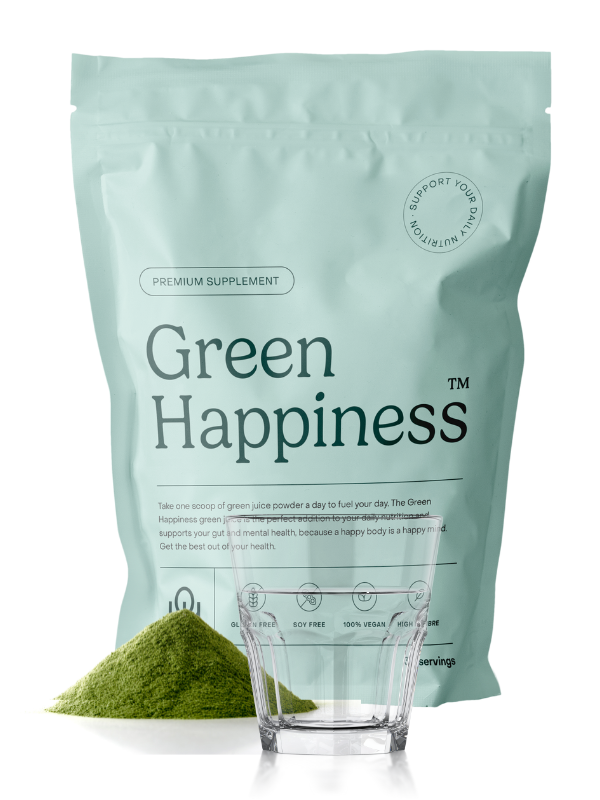
Awaken your inner mermaid!
Without exaggeration, this is it. And no matter how exotic it may seem, we’re sure you’ve eaten it before (or at least know it). You don’t need to visit special nature stores for it, and even Ariel was a fan. What are we talking about? Seaweed!
You might primarily know that seaweed is a good source of iodine. Great when, for instance, you’ve started eating less bread (bread is one of the biggest sources of iodine in Dutch nutrition due to the added iodized salt). But through seaweed, you get many more essential nutrients and minerals.
What do you get from it?
- Omega 3 fatty acids: where do you think fish get their omega fatty acids from? Exactly, algae! For the benefits of these essential fatty acids, you can go directly to the source by eating more seaweed.
- Fibers: like all vegetables, sea vegetables are full of fiber. These fibers are not only your beauty tool to become saturated but also to safely remove waste products!
- Calcium, magnesium, iron: the beauty minerals that your body needs not only for strong bones but also for a powerful mane, radiant skin, and strong nails.
- Vitamin B12: what?? Indeed, by eating dulse (I Sea Bacon), you get vitamin B12. 0.6 mcg per 100 grams. You can also get some vitamin B12 from eating chlorella. Whether it’s all absorbed is (still) not known, but it’s a fun fact for the plant-eaters among us!
And this is just a small selection from the long list of vitamins, minerals, and bioactive substances found in these superfoods.

What types are there and what can you use them for?
- Nori: you know it from sushi. You can use it to make sushi rolls, but shredding the sheets and mixing them with a salad is also very tasty. Or roast some sheets with a little bit of sea salt or herbs in the oven for healthy superfood chips!
- Wakame: you may know it from the seaweed salad you can order in many Thai (and sushi) restaurants. Be sure to rinse it well before preparation, and then you can use it in a soup or make delicious (raw) salads from it.
- Dulse: we know it mainly from I Sea Bacon. Sauté briefly and use as a salty (bacon-like) topping over burgers, salads, soups, pastas or mashed dishes.
- Kelp: perhaps you know kelp from the glassy kelp noodles you can use as spaghetti. Kelp is one of the biggest sources of iodine, so don’t consume large quantities daily, as your thyroid will have to work hard to remove the excess iodine.
- Seaweed spaghetti: great as a replacement for Italian (wheat) spaghetti! But you can also incorporate sea spaghetti into a curry or, as we did in this recipe, turn it into a burger!
- Kombu: the tip where we know kombu from; cook a strip with your legumes. Kombu helps to largely digest the enzymes that cause gas formation. After use, discard the strip and scoop out the foam from the pan while your beans are cooking.
- Samphire or sea lettuce: you see these a lot at the fishmonger. Tasty in a salad or with your hot meal! Do check the ingredient list, sometimes (unnecessary) sugar or another ingredient is added that you don’t want.
- Chlorella and spirulina: available in powder and tablets. These are super powerful cleansers for the body. Both are quite strong in flavor, so be careful not to overdo it when adding to your meal! A small teaspoon of spirulina in your smoothie gives it a fairy tale blue color and a teaspoon of chlorella in your (avocado) dressing adds just a little more salty zing.
What makes seaweed so detox proof?
Algae and seaweed have the property of binding to heavy metals and helping to remove them. It’s not for nothing that during a detox, it is often advised to use chlorella or spirulina. And after reading how many minerals you find in these superfoods, you’ll understand why you find several dishes featuring seaweed in the The Green Happiness Detox Book!
Fun fact: rseaweed is also very sustainable. It comes straight from the sea and is only dried. It doesn’t need to be cultivated, and no pesticides are required. Of course, do check where your seaweed comes from. At SeaMore, for example, you can see that they only harvest 15% from the sea per location, allowing the seaweed the chance to regrow.

Sources:
1. The Guardian. Seven Reasons To Eat Seaweed. https://www.theguardian.com/lifestyle/2006/apr/15/healthandwellbeing.features.
2. Seamore. Health Benefits. https://seamorefood.com/health-matrix/health/benefits/.
